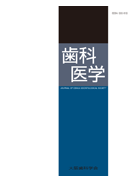Volume 85, Issue 1
Displaying 1-10 of 10 articles from this issue
- |<
- <
- 1
- >
- >|
-
Article type: research-article
2022 Volume 85 Issue 1 Pages 1-7
Published: March 25, 2022
Released on J-STAGE: June 25, 2022
Download PDF (550K) -
Article type: research-article
2022 Volume 85 Issue 1 Pages 8-13
Published: March 25, 2022
Released on J-STAGE: June 25, 2022
Download PDF (851K) -
Article type: research-article
2022 Volume 85 Issue 1 Pages 14-20
Published: March 25, 2022
Released on J-STAGE: June 25, 2022
Download PDF (751K) -
Article type: research-article
2022 Volume 85 Issue 1 Pages 21-27
Published: March 25, 2022
Released on J-STAGE: June 25, 2022
Download PDF (545K) -
Article type: research-article
2022 Volume 85 Issue 1 Pages 28-38
Published: March 25, 2022
Released on J-STAGE: June 25, 2022
Download PDF (662K) -
Article type: research-article
2022 Volume 85 Issue 1 Pages 39-44
Published: March 25, 2022
Released on J-STAGE: June 25, 2022
Download PDF (662K) -
Article type: research-article
2022 Volume 85 Issue 1 Pages 45-51
Published: March 25, 2022
Released on J-STAGE: June 25, 2022
Download PDF (562K) -
Article type: research-article
2022 Volume 85 Issue 1 Pages 52-57
Published: March 25, 2022
Released on J-STAGE: June 25, 2022
Download PDF (309K) -
Article type: meeting-report
2022 Volume 85 Issue 1 Pages 59-63
Published: March 25, 2022
Released on J-STAGE: June 25, 2022
Download PDF (204K) -
Article type: meeting-report
2022 Volume 85 Issue 1 Pages 64-68
Published: March 25, 2022
Released on J-STAGE: June 25, 2022
Download PDF (252K)
- |<
- <
- 1
- >
- >|
